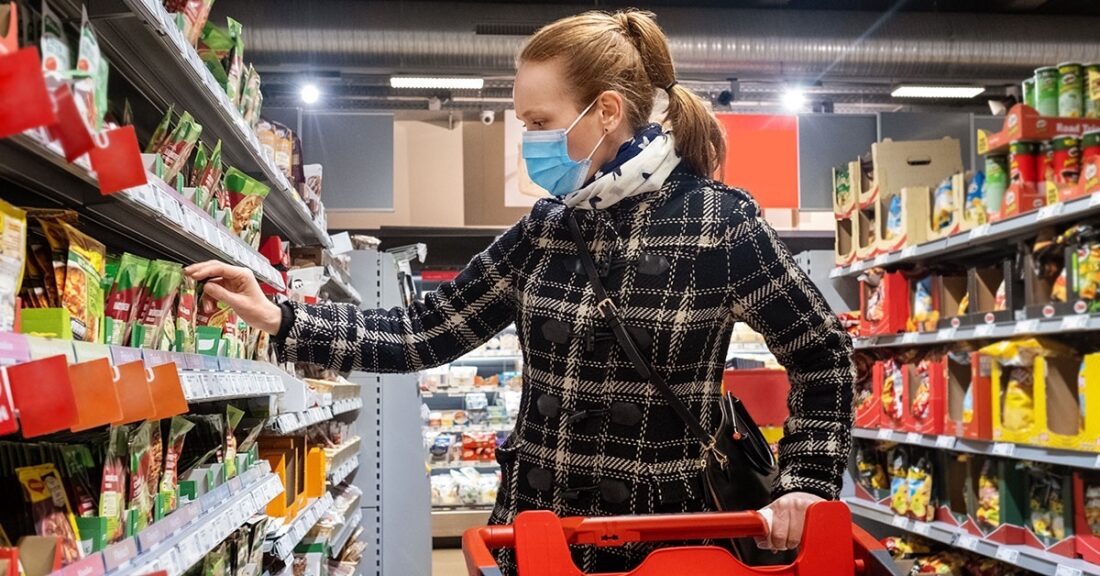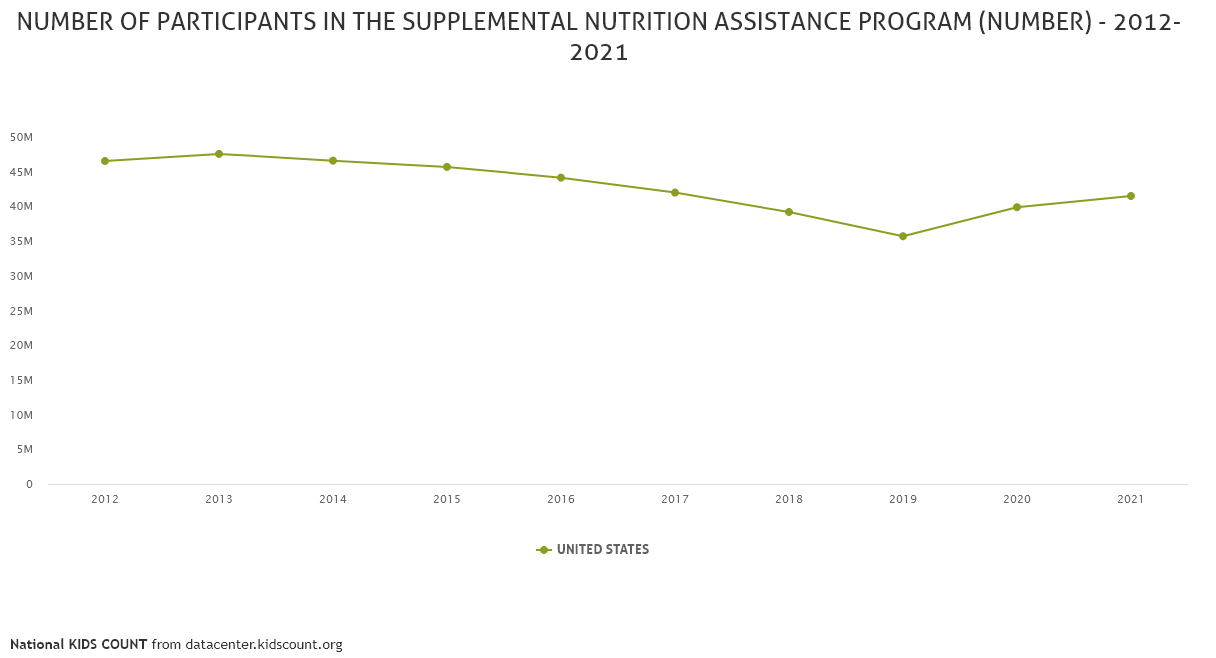41.5 Million People Received Food Stamps in 2021

After steadily declining from 2013 to 2019, the number of individuals in the United States participating in the Supplemental Nutrition Assistance Program — formerly known as Food Stamps — sharply increased in 2020, when the COVID-19 pandemic hit, from 35.7 million in 2019 to nearly 40 million. The number continued to rise in 2021, reaching about 41.5 million, according to newly updated figures in the KIDS COUNT® Data Center.

What Is the Supplemental Nutrition Assistance Program (SNAP)?
SNAP is a vital federal anti-hunger program for low-income families, seniors and people with disabilities. Over two-thirds of participants are in families with kids, although not all eligible people receive SNAP benefits, and many who receive the benefits still have difficulty paying for adequate food in addition to housing and other basic living expenses. Recognizing the economic realities facing American families, in 2021, the federal government enacted temporary, pandemic-response increases in SNAP benefits as well as long-term increases in benefits to better reflect the current costs of nutritious food.
How Does Family Participation in SNAP Vary by State?
To shed light on state-level SNAP participation rates, the Center on Budget and Policy Priorities (CBPP) recently released an analysis of SNAP data from 2019, revealing wide variation in family participation across the country. For example, according to CBPP, in Oregon and Massachusetts, just over half (52% and 53%) of SNAP participants were in households with children, compared to more than three-fourths in Utah (77%) and Texas (79%). This figure was at least 60% for the vast majority of states and more than 66% for the U.S. as a whole. Get a 2021 SNAP Fact Sheet for your state.
How Does SNAP Benefit Children?
SNAP reduces family poverty and food insecurity, which is a critical benefit for children as food insecurity among kids is linked to adverse long-term cognitive, health, mental health and educational outcomes. Poverty and food insecurity also disproportionately affect families of color, making SNAP an important program for addressing racial and ethnic inequities.
Access All Data on Family Economics in the KIDS COUNT Data Center
See more data on public assistance, income and other family economic issues in the KIDS COUNT Data Center, including the percentage of all eligible people who participated in SNAP by state from 2015 to 2017, based on an analysis by the Mathematica Policy Research Institute. This indicator will be updated when new analysis is available.
Stay Connected with the Data Center
Sign up for our newsletters to get the latest data, reports and other resources.





